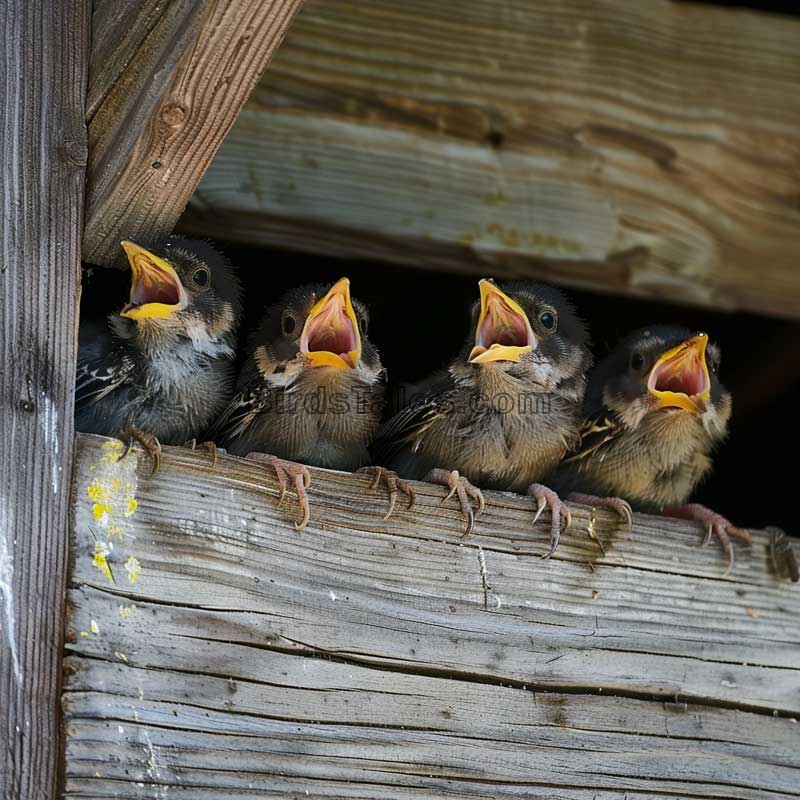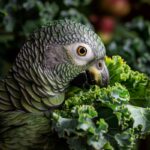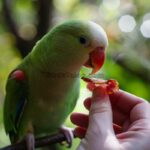Understanding Baby Starling Dietary Needs
Baby starlings need a diet high in protein.
Unlike other birds, they cannot digest seeds.
Starlings are insectivores, so their chicks need insects or a similar protein source.
This makes their dietary needs quite specific and important for their growth and development when following proven feeding techniques for baby starlings.
Ideal Foods for Baby Starlings
- Insects: Beetles, caterpillars, and grasshoppers are excellent choices. These provide the necessary protein and nutrients that baby starlings need to grow.
- Special formulas: There are commercial formulas available that are designed to meet the nutritional needs of baby birds. These formulas are a good alternative when insects are not available.
- Homemade mix: A common recipe includes soaked cat food, applesauce, a hard-boiled egg, and a calcium supplement. This mixture provides a balanced diet, mimicking the high-protein diet they get from insects.
Can parrots eat figs? Yes, they can! Figs are safe and healthy for parrots. They provide many nutrients, making them…
Foods to Avoid
- Seeds: Starlings cannot digest seeds properly, making them an unsuitable food choice. Their digestive system isn’t built for it.
- Dairy products: Baby starlings cannot digest dairy products, which can cause digestive issues.
- Processed foods: Foods that are high in sugar or salt are harmful. They do not provide the necessary nutrients and can lead to health problems.
Preparing Homemade Starling Feed
Creating a homemade feed for your baby starling ensures they get the right balance of nutrients when following proven feeding techniques for baby starlings.
Here’s a detailed recipe to follow.
Can parrots eat figs? Yes, they can! Figs are safe and healthy for parrots. They provide many nutrients, making them…
1. Step-by-Step Recipe
- Ingredients:
- Soaked cat food (high protein)
- Applesauce
- Hard-boiled egg
- Calcium supplement
- Preparation:
- Soak the cat food: Place the cat food in water and let it soak until it becomes soft.
- Mix ingredients: Combine the soaked cat food with applesauce and a mashed hard-boiled egg. This creates a smooth mixture that is easy for the chick to eat.
- Add calcium: Sprinkle a small amount of calcium supplement into the mixture. This is important for the chick’s bone development.
- Check temperature: Ensure the food is at room temperature before feeding it to the chick. Feeding cold or hot food can be harmful.
2. Proper Feeding Techniques
Feeding a baby starling requires a gentle approach.
- Tools: Use a small spoon, tweezers, or a syringe. These tools help you deliver the food in small amounts.
- Method: Gently place the food at the chick’s beak. Allow the chick to swallow before giving more. This mimics how they would be fed in the wild by their parents.
- Feeding posture: Hold the chick in a way that supports its head and neck. This helps prevent choking and ensures the food goes down smoothly.
Remember, feeding baby starlings is not just about giving them food.
It’s about providing the right nutrients, at the right times, in the right way.
Following these guidelines will help your baby starling grow healthy and strong.
Can parrots eat figs? Yes, they can! Figs are safe and healthy for parrots. They provide many nutrients, making them…
Feeding Schedule for Optimal Health
Keeping a regular feeding schedule is key to the healthy development of baby starlings.
You can’t just wing it with these little guys.
They need consistency to thrive.
Think of it like setting up a baby bird buffet with strict opening hours.
This not only supports their physical growth but also helps establish a routine, which is crucial for their overall well-being.
Frequency and Timing
When it comes to feeding baby starlings, timing is everything.
Newly hatched chicks have tiny stomachs and need frequent, small meals.
They should be fed every 20-30 minutes during daylight hours.
Yes, it’s a lot, but these little ones have high energy needs.
As they grow, the intervals can be stretched a bit.
For older chicks, you can feed them every 45-60 minutes.
This gradual increase in time between feedings helps them adjust to longer periods without food, preparing them for eventual independence.
Pro Tip: Always feed during daylight hours.
Starlings, like many birds, are active during the day and rest at night.
Mimicking this natural pattern helps in their growth and health.
Monitoring and Adjusting the Feeding Process
Observing your baby starling is crucial.
It’s like being a detective, always on the lookout for clues that indicate their health and well-being.
Regular monitoring helps ensure they are getting enough food and the right nutrients.
Signs of Adequate Feeding
There are clear signs to look for to determine if your baby starling is well-fed:
- Energy levels: A well-fed chick will be active and alert. If they seem lethargic, it might be a sign they need more food.
- Growth rate: Steady growth is a good indicator. Weigh them regularly to ensure they are gaining weight consistently.
- Vocalization: Hungry chicks peep loudly and often. A content chick will be quieter, only peeping occasionally.
Adjustments Based on Development
As your starling grows, you’ll need to adjust their feeding process.
Around 4 weeks old, they should start showing interest in solid food.
This is your cue to introduce a shallow dish with solid food, such as small insects or a balanced bird formula.
This transition helps them learn to eat on their own.
Pro Tip: Encourage self-feeding by gently pecking at the food in front of them.
It might sound silly, but it mimics natural behavior and helps them learn.
Conclusion
Caring for a baby starling is a rewarding but demanding task.
Proper feeding is the cornerstone of their growth and health.
By following a regular feeding schedule, monitoring their progress, and adjusting your approach as they develop, you can ensure your baby starling thrives when utilizing proven feeding techniques for baby starlings.
Remember, each chick is unique and may have slightly different needs.




